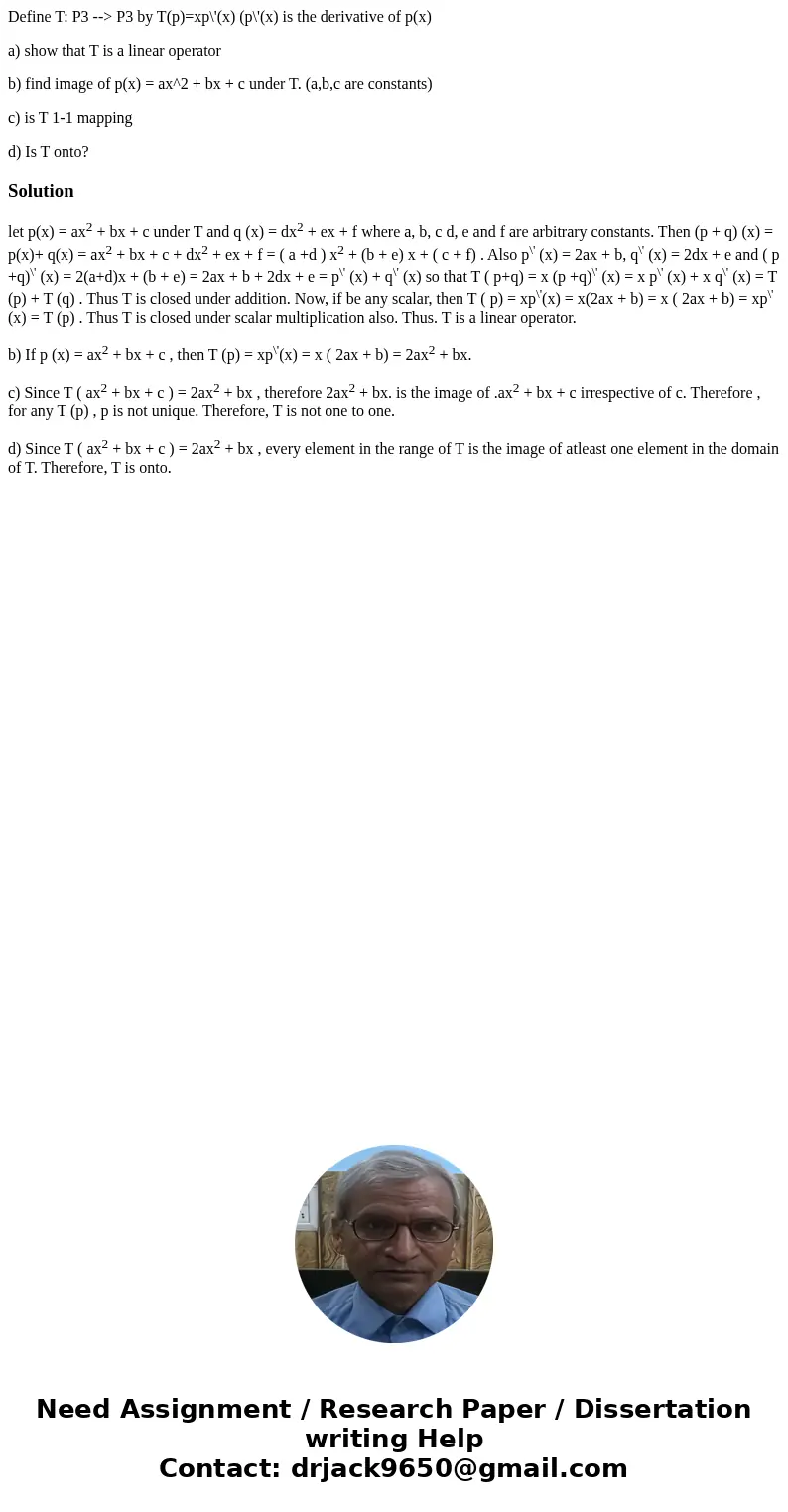Define T P3 P3 by Tpxpx px is the derivative of px a show t
Define T: P3 --> P3 by T(p)=xp\'(x) (p\'(x) is the derivative of p(x)
a) show that T is a linear operator
b) find image of p(x) = ax^2 + bx + c under T. (a,b,c are constants)
c) is T 1-1 mapping
d) Is T onto?
Solution
let p(x) = ax2 + bx + c under T and q (x) = dx2 + ex + f where a, b, c d, e and f are arbitrary constants. Then (p + q) (x) = p(x)+ q(x) = ax2 + bx + c + dx2 + ex + f = ( a +d ) x2 + (b + e) x + ( c + f) . Also p\' (x) = 2ax + b, q\' (x) = 2dx + e and ( p +q)\' (x) = 2(a+d)x + (b + e) = 2ax + b + 2dx + e = p\' (x) + q\' (x) so that T ( p+q) = x (p +q)\' (x) = x p\' (x) + x q\' (x) = T (p) + T (q) . Thus T is closed under addition. Now, if be any scalar, then T ( p) = xp\'(x) = x(2ax + b) = x ( 2ax + b) = xp\' (x) = T (p) . Thus T is closed under scalar multiplication also. Thus. T is a linear operator.
b) If p (x) = ax2 + bx + c , then T (p) = xp\'(x) = x ( 2ax + b) = 2ax2 + bx.
c) Since T ( ax2 + bx + c ) = 2ax2 + bx , therefore 2ax2 + bx. is the image of .ax2 + bx + c irrespective of c. Therefore , for any T (p) , p is not unique. Therefore, T is not one to one.
d) Since T ( ax2 + bx + c ) = 2ax2 + bx , every element in the range of T is the image of atleast one element in the domain of T. Therefore, T is onto.

 Homework Sourse
Homework Sourse